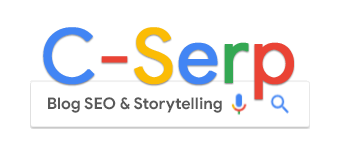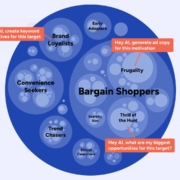The future of PPC is AI-on-AI – but only one side knows your business by MotiveMetrics


Why PPC professionals are moving beyond platform black box AI
The promise of AI in paid search has never been more compelling—or more challenging to execute effectively. In Mediaocean’s 2025 H1 Advertising Outlook, 63% of marketers named generative AI their top strategic trend, eclipsing even CTV and social video.
Google’s new AI Max for Search promises +14% conversions at the same CPA by letting algorithms expand beyond your keyword lists, while Microsoft’s Copilot boasts chat-based ad formats driving 3× higher click-through rates than traditional SERPs.
For advertisers, this represents opportunity and risk. When platform AI decides which queries to match, which headlines to write, and how to price clicks, the game becomes AI vs. AI – their machine against yours. Without an advertiser-side intelligence layer, you’re flying blind inside someone else’s black box.
The black box problem: When platform AI gets too aggressive
Google’s expansion of broad match capabilities and automated campaign types like Performance Max has created a paradox for advertisers. While these technologies can identify valuable traffic opportunities, they frequently venture into territory that doesn’t align with campaign objectives or brand guidelines.
Here’s what this looks like in practice:
- A campaign for “used SUVs” starts triggering impressions for “cheap moving trucks.”
- An ad for “MBA programs in Boston” shows up for “community college online courses.”
- A brand campaign for luxury furniture suddenly spends 30% of its budget on “dorm decor”
This isn’t theoretical. It’s the daily reality for search marketers trying to make broad match work.
The challenge intensifies when dealing with sensitive verticals, competitive landscapes, or campaigns with strict relevance requirements. Broad match AI often interprets user intent through a lens that prioritizes volume over precision.
Even Google acknowledges transparency concerns, having published lengthy FAQs addressing Performance Max as a “black box” that disconnects advertisers from the raw signals that once guided strategy: search terms, negative keyword gaps, creative-to-query alignment, and auction insights by segment.
The need for a Search Intelligence Operating System
The solution isn’t to abandon AI – it’s to leverage your own advertiser-side intelligence layer that can interpret intent as deeply as the platforms do, then feed better signals back automatically at scale.
Think of this as a Search Intelligence Operating System that sits between your brand and publisher APIs. Its job is to observe every query, click, and outcome; decide where opportunities lie using transparent models; act by publishing precise changes; and learn continuously from live performance data.
This approach addresses the fundamental challenge: publisher AI optimizes for the publisher’s goals, not necessarily yours. Your competitive edge depends on having systems that understand your specific business context, brand guidelines, and customer motivations.

How MotiveMap.ai intent mapping changes everything
The foundation of effective search intelligence starts with treating Paid Search as the world’s biggest focus group.
Advanced machine learning models can parse millions of search queries per month into meaningful clusters, rolling them up into intent themes and inferred psychological motivations.
A single enterprise account might compress 2 million raw queries into roughly 200 intent themes – a manageable framework that humans can interpret and act upon. These themes become your source-of-truth data for everything that follows:
- Audience building
- Creative development
- Landing page messaging
- Performance measurement
For example, a financial services advertiser might discover their “investment advice” campaigns are triggering searches related to gambling, cryptocurrency speculation, or get-rich-quick schemes. While these terms share semantic relationships with legitimate investment content, they represent entirely different user intents and regulatory considerations.
Sophisticated intent mapping recognizes these nuanced distinctions and proactively suggests negative keyword additions that preserve campaign reach while eliminating problematic traffic. This goes beyond reactive management to anticipate issues before they impact performance or brand safety.
A real-world example of this approach is CarGurus, which used MotiveMap as a search intelligence operating system to guide its paid search strategy. By leveraging AI to interpret user intent, segment queries, and redistribute ad content with precision, CarGurus achieved a 26% increase in conversions and a 38% lift in actual car purchases.
With MotiveMap’s intelligence layer acting between the brand and the platform, ad impressions surged by 189%, while search intent alignment jumped from 34% to 57%. Unique search term coverage more than tripled – from 941 to over 3,198 – showing how an advertiser-side OS can dramatically scale both reach and relevance through AI.
Signal generation that improves platform performance
One of the most significant benefits of proper intent mapping and negative keyword management extends beyond immediate campaign improvements. These activities generate quality signals that enhance Google’s AI understanding of campaign objectives, creating a positive feedback loop that improves automated bidding and targeting performance over time.
When campaigns maintain high relevance scores through intelligent traffic management, Google’s algorithms receive clearer signals about which traffic converts and which doesn’t. This data quality improvement translates into better automated bidding decisions, more accurate audience targeting, and improved ad serving optimization.
The key is feeding platforms cleaner audience segments as first-party data objects that can be pushed directly into publisher audience signal fields. This approach helps platform AI start with better seeds, explore adjacent queries more intelligently, and avoid cannibalizing branded or low-value traffic.
MotiveMap’s AI agents: Bridging automation and control
MotiveMap’s approach differs fundamentally from both DIY solutions and Google’s broad automation tools.
Rather than requiring advertisers to become AI developers or surrender complete control to platform algorithms, MotiveMap provides intelligent assistance that enhances decision-making without replacing human expertise.
MotiveAI, the platform’s AI agent, addresses practical optimization challenges through:
- Smart negative keyword management: The system analyzes search term reports not just for obviously irrelevant terms, but for patterns indicating misaligned intent, competitive confusion, or brand safety concerns. Recommendations are presented with supporting data and organized by confidence level and potential impact.
- Intelligent content redistribution: Rather than simply copying successful ads, the AI understands context and relevance factors that determine when similar content will be effective versus when it might dilute performance. This creates more coherent campaign messaging that reinforces positive signals to platform optimization algorithms.
- Transparent recommendations: Unlike black box automation, MotiveMap presents suggestions with clear reasoning, allowing advertisers to understand the logic behind recommendations and make informed decisions about implementation.
The user interface design prioritizes transparency and control. Where Google’s automated solutions often operate as black boxes, MotiveAI presents recommendations in context, explaining reasoning and allowing for easy approval or modification of suggested changes.


Looking forward: Generative AI with brand guidelines
The current AI agent represents just the beginning of MotiveMap’s capabilities. In development is a generative AI feature that will create and optimize ad content while enforcing brand guidelines and compliance requirements.
Unlike generic AI tools, this system will:
- Ingest legal restrictions, voice and tone requirements, and excluded terms
- Generate brand-safe content at scale using these guardrails
- Automatically test and deploy across the most relevant intent segments
This represents creative intelligence with compliance built in – something even advanced advertisers struggle to achieve manually today. The system will utilize extensive performance data and optimization patterns to provide suggestions specifically tailored to each account’s history and objectives.
The strategic advantage of augmented intelligence
The competitive landscape for PPC management continues evolving rapidly, with AI playing an increasingly central role in campaign optimization. The most successful advertisers are those who strategically combine AI capabilities with human expertise and business intelligence.
MotiveMap’s AI agent provides this combination by handling routine optimization tasks with sophisticated AI while maintaining the transparency and control that professional PPC managers require. The platform’s focus on signal generation and Google AI enhancement creates compound benefits that extend beyond immediate campaign improvements.
As the industry embraces AI-powered optimization, the distinction between tools that replace human judgment and those that enhance it becomes increasingly important. The most effective platforms understand the nuanced requirements of professional PPC management and design AI systems accordingly.
For PPC professionals evaluating AI solutions, the choice isn’t between automation and manual management – it’s between AI systems that provide black box automation and those that offer transparent, controllable intelligence that enhances professional expertise.
Ready to take control?
The era of flying blind in platform black boxes is ending. When Google’s AI Max and Microsoft’s Copilot optimize for their goals in milliseconds, your competitive advantage depends on having equally sophisticated advertiser-side intelligence that maps intent, deploys at scale, and maintains constant awareness of market shifts.
MotiveMap’s AI Agent beta demonstrates that the most effective AI tools are those designed specifically for the unique requirements of paid search professionals, combining automation efficiency with the transparency and control that drive real business results.
As search platforms further embrace automation, marketers will gain the real edge from better inputs, smarter segmentation, and human-guided strategy.
If you’re serious about getting more from broad match, cutting wasted spend, and making search platforms’ AI work for you, not against you – now’s the time to try MotiveMap.


